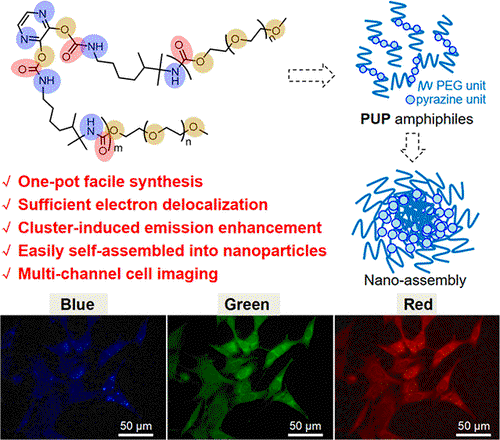Amphiphilic Polyurethane with Cluster-Induced Emission for Multichannel Bioimaging in Living Cell Systems

摘要
The development of single-component materials with low cytotoxicity and multichannel fluorescence imaging capability is a research hotspot. In the present work, highly electron-deficient pyrazine monomers were covalently connected into a polyurethane backbone using addition polymerization with terminal poly(ethylene glycol) monomethyl ether units containing a high density of electron pairs. Thereby, an amphiphilic polyurethane-pyrazine (PUP) derivative has been synthesized. The polymer displays cluster-induced emission through compact inter- and/or intramolecular noncovalent interactions and extensive through-space electron coupling and delocalization. Molecular rigidity facilitates red-shifted emission. Based on hydrophilic/hydrophobic interactions and excitation dependence emission at low concentrations, PUP has been self-assembled into fluorescent nanoparticles (PUP NPs) without additional surfactant. PUP NPs have been used for cellular multicolor imaging to provide a variety of switchable colors on demand. This work provides a simple molecular design for environmentally sustainable, luminescent materials with excellent photophysical properties, biocompatibility, low cytotoxicity, and color modulation.